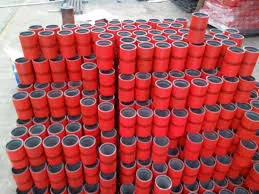- Afrikaans
- Albanian
- Amharic
- Arabic
- Armenian
- Azerbaijani
- Basque
- Belarusian
- Bengali
- Bosnian
- Bulgarian
- Catalan
- Cebuano
- Corsican
- Croatian
- Czech
- Danish
- Dutch
- English
- Esperanto
- Estonian
- Finnish
- French
- Frisian
- Galician
- Georgian
- German
- Greek
- Gujarati
- Haitian Creole
- hausa
- hawaiian
- Hebrew
- Hindi
- Miao
- Hungarian
- Icelandic
- igbo
- Indonesian
- irish
- Italian
- Japanese
- Javanese
- Kannada
- kazakh
- Khmer
- Rwandese
- Korean
- Kurdish
- Kyrgyz
- Lao
- Latin
- Latvian
- Lithuanian
- Luxembourgish
- Macedonian
- Malgashi
- Malay
- Malayalam
- Maltese
- Maori
- Marathi
- Mongolian
- Myanmar
- Nepali
- Norwegian
- Norwegian
- Occitan
- Pashto
- Persian
- Polish
- Portuguese
- Punjabi
- Romanian
- Russian
- Samoan
- Scottish Gaelic
- Serbian
- Sesotho
- Shona
- Sindhi
- Sinhala
- Slovak
- Slovenian
- Somali
- Spanish
- Sundanese
- Swahili
- Swedish
- Tagalog
- Tajik
- Tamil
- Tatar
- Telugu
- Thai
- Turkish
- Turkmen
- Ukrainian
- Urdu
- Uighur
- Uzbek
- Vietnamese
- Welsh
- Bantu
- Yiddish
- Yoruba
- Zulu
High-Quality Pup Joint Tubing for Oil and Gas Industry
Understanding Pup Joint Tubing in the Oil and Gas Industry
In the oil and gas industry, efficient flow of hydrocarbons from the reservoir to the surface is essential for operational success. One of the components that plays a crucial role in this process is the pup joint tubing. Pup joints are short lengths of pipe that are used to connect sections of tubing in a well, allowing for greater flexibility and precision in wellbore completions and configurations.
Pup joints come in varying lengths, typically ranging from 2 to 10 feet, and are available in a variety of diameters and pressure ratings. This versatility makes them invaluable when adjustments in the tubing string are needed. Whether it's to compensate for subsurface conditions, account for changes in well design, or facilitate maintenance operations, pup joint tubing can help optimize performance.
One of the primary functions of a pup joint is to adjust the total length of the tubing string. In many instances, drilling a well requires a specific tubing length to effectively manage pressures underground. If the installed tubing is either too short or too long, it can lead to complications such as ineffective pressure control or difficulties in maintaining flow rates. By incorporating pup joints into the tubing string, operators can fine-tune the length to achieve desired operational parameters.
In addition to length adjustments, pup joints are also essential for accommodating directional changes in horizontal or deviated wells. When wells are drilled at angles, the configuration of the tubing must be modified to navigate the bends and turns effectively. Pup joints can be strategically placed to manage these directional changes without compromising the integrity of the tubing string.
pup joint tubing

Moreover, pup joints facilitate easier maintenance and inspection processes. If a section of the tubing needs to be replaced or repaired, using pup joints can simplify the disconnection process. Since they can be easily added or removed, operators can conduct maintenance operations more efficiently, reducing downtime and operational costs.
Another important aspect of pup joints is their compatibility with various high-strength materials. Modern pup joint tubing is often fabricated from durable metals such as carbon steel or stainless steel, which are designed to withstand high pressures and resist corrosion. This durability is critical, especially in harsh environments associated with oil and gas extraction.
Additionally, the use of pup joints can enhance safety during drilling operations. By allowing operators to configure the tubing with precision, the risk of blowouts or other pressure-related incidents can be minimized. An adequately designed tubing string contributes to the overall integrity of the well, ensuring safer operations for all personnel involved.
In conclusion, pup joint tubing is a fundamental component in the oil and gas industry, enabling efficient management of tubing lengths, supporting directional drilling, and simplifying maintenance. As technology advances, the materials and engineering behind pup joints continue to evolve, providing operators with enhanced safety and performance capabilities. Understanding the significance of pup joints is essential for anyone involved in well design and production management, as they are crucial to the successful flow of hydrocarbons from underground reservoirs to the surface.
-
Tubing Pup Joints: Essential Components for Oil and Gas OperationsNewsJul.10,2025
-
Pup Joints: Essential Components for Reliable Drilling OperationsNewsJul.10,2025
-
Pipe Couplings: Connecting Your World EfficientlyNewsJul.10,2025
-
Mastering Oilfield Operations with Quality Tubing and CasingNewsJul.10,2025
-
High-Quality Casing Couplings for Every NeedNewsJul.10,2025
-
Boost Your Drilling Efficiency with Premium Crossover Tools & Seating NipplesNewsJul.10,2025







